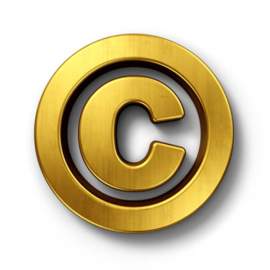
Important Facts About Copyright Protection

Popular In Copyright
Copyright Infringements What Is Copyright Legal Consequences Of Plagiarism Copyright Free Image Copyright Law Florida Prepaid Postsecondary Education Expense Board V College Savings Bank Famous Cases Of Copyright Law Library Of Congress Copyright Copyright A Book Copyright Infringement Punishment Copyright Symbol Copyright Laws For Motion Pictures
Why Does Copyright Protection Exist?
Copyright is an important aspect of American law which protects ideas, in
addition to creating fertile ground for the formation of new ideas. It
encourages people to create new ideas by not being limited to creative ideas
that already exist. Also, without copyright protection a person's hard work would
go unnoticed and he or she would not receive the recognition he or she
deserves.
Works which can be afforded copyright protection
include:
Literary works;
Musical works, including lyrical content;
Works of drama, including any accompanying music;
Pantomimes and choreographic works;
Pictorials, graphics, and sculptures;
Motion pictures and other works of audiovisuals;
Sound recordings;
Architectural works.
What is Required of a Work to be Eligible for Protection?
While most works of an artistic
nature and original ideas are capable of being protected under copyright law,
there are certain requirements that must be met. First, ideas must be presented in a permanent tangible form of
expression. An idea in an individual's head cannot be copyrighted until it is
put into a musical song, speech, motion picture, or painting. Next, titles,
names, short phrases,
and slogans, along with typographic ornamentation cannot be copyrighted. Even
so, some logos can be copyrighted as long as they have artistic validity.
Finally, works that are of common property with no original ownership cannot be
copyrighted. This includes calendars and tape measures.
Copyrights are granted to authors of books the moment they
finish writing them. Both published and unpublished books, as well as
manuscripts, can be copyrighted as literary works. This includes fiction,
nonfiction, compilations, directories, catalogs, dissertations, speeches,
pamphlets,
and more. A book may be registered with the U.S. Copyright Office as either a published or unpublished work. If a registered unpublished book is then
published, it is required to be re-registered with the Copyright Office.
Just like authors and movie makers are protected by copyright,
photographers are protected for their work as well. It has protection the minute
that a photograph is taken and should be noted as such with the 'C' symbol and year of authorship. The photographs can also be
given added protection when registered with the U.S. Copyright Office.
Photographs can be claimed for copyright in single form or in groups.
Photographs that are unpublished must meet certain requirements:
The photographs should be neatly compiled;
A title for a collection of photographs must be created;
The same party must be filing the claim for all photos submitted;
The author must be the creator of the photographs.
Published and unpublished photographs may not be combined in a single copyright
claim.
A website can be copyrighted because it meets all of the
requirements in the definition of a copyrighted work. It is a tangible medium
by which ideas and artistic expression can be conveyed. However, websites present a tricky situation because websites can be updated quite
easily and frequently over the course of several days. As a result, the rules
have been adjusted for website copyright.
An author of a website is given all the copyright protection of any other
original work, including the photographs, written work, and artwork that is
included on the website. It should be noted that any additional excerpts that
are added to the website are given copyright protection, but if the author
would like to keep it registered with the U.S. Copyright Office, each
individual revision is required to be separately registered.
Although content of websites can be copyrighted, the domain name in which the
website is located cannot be copyrighted. Domain names are not handled by the
U.S. Copyright Office. Instead, the Internet Corporation of Assigned Names and
Numbers handles domain names, which must be purchased for use.
Since copyrights are a type of intellectual property law which
protects the authors of works of art which convey ideas, names are not included
under this protection. Names are a simplistic way of identifying an entity and
are often used in the marketing of a product or work. For this reason, names
are not handled by the U.S. Copyright Office, but instead can be registered at
the U.S. Patent and Trademark Office (USPTO) as a trademark.
When a person wants exclusive rights to a company name, for example, he or she submits it to the USPTO. The USPTO will then examine the name and compare it with other registered trademarks. If there are any matches found or if the name is too similar to another, it will be rejected. If it is accepted, the name is then protected by law.
NEXT: Name Copyright At A Glance



















